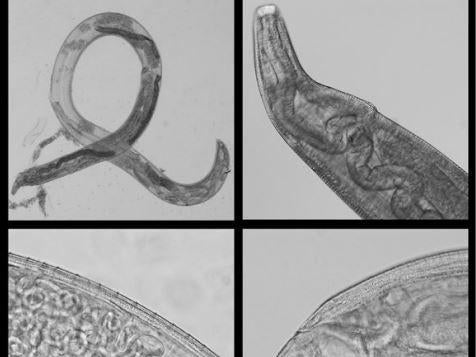Parasitic worms found in woman’s eye as scientists warn of ‘emerging’ disease
Patient remembers ‘swatting the flies from her face and spitting them out of her mouth’

A parasitic worm typically found in cattle has been discovered in a woman’s eye in what scientists have warned may be an “emerging zoonotic disease” in the US.
The 68-year-old woman is the second human to have become infected by the parasite.
She was jogging on a trail near the coast in California in March 2018 when she ran around a corner into a swarm of flies, according to a case report in the journal Clinical Infectious Diseases.
The report said she remembered “swatting the flies from her face and spitting them out of her mouth”.
A month later, she experienced irritation in her right eye and when she flushed it out with tap water, she discovered a transparent roundworm around half an inch long, Live Science reported.
Inspecting her eye more closely, she found and removed a second worm.
The next day she visited an opthalmologist in Monterey, California, who removed a third parasite and sent it to the Centers for Disease Control and Prevention for identification.
Researchers there analysed the sample and identified it as a species of eye worm called Thelazia gulosa.
The parasitic worms are typically found in cattle and carried by certain types of flies.
Despite being prescribed an antibiotic ointment, she continued to feel irritation in both eyes.
Another doctor inspected her eyes but did not find any worms, instead diagnosing her with papillary conjunctivitis.
But she later found a fourth worm and after removing it, her conjunctivitis went away.

Only one other case of a human becoming infected by T gulosa has been reported before.
A 26-year-old woman from Oregon became infected in August 2016.
The second case within two years “suggest[s] this may represent an emerging zoonotic disease in the US,” the authors wrote, describing a disease that is transferred from animals to people.
Join our commenting forum
Join thought-provoking conversations, follow other Independent readers and see their replies
Comments
Bookmark popover
Removed from bookmarks